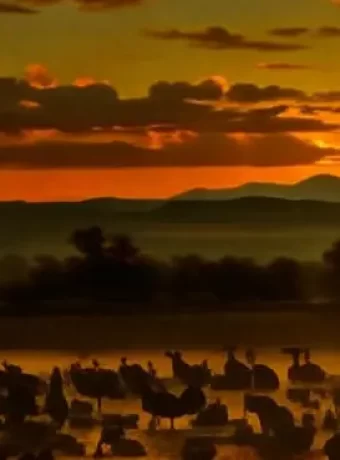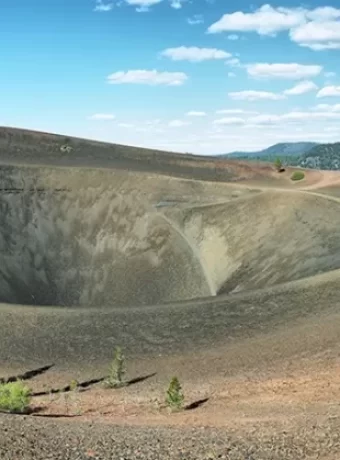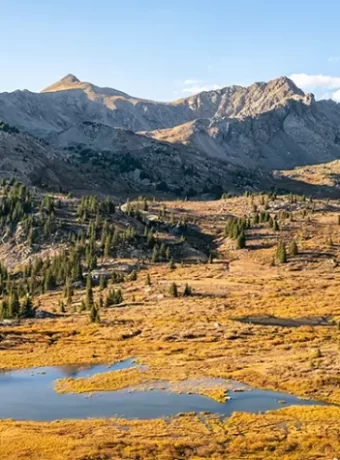History of Butte Montana unfolds like a saga beneath the Big Sky—where copper kings once ruled and miners dug deep into ‘the Richest Hill on Earth’. It’s a tale brimming with riches, rivalries, and resilience. Here you’ll dig into how this mining town rose from rugged camps to become an industrial powerhouse that echoed across continents.
You’ll meet the magnates whose empires fueled growth yet fanned flames of contention. You’re about to step back in time through streets lined with stories of cultural mosaics woven by waves of immigrants seeking their share beneath those rocky ledges. Rich and colorful the History of Butte Montana.
Dive in, because Butte’s history is America’s story too—a testament to grit, ingenuity, and the enduring spirit that shaped not just a city but also helped wire up a nation.
This is the first in a small collection of observation about Butte, Montana. Surrounding area offer the outdoors person a plethora of opportunities. Fly fishing the Big Hole River, surrounding lakes or section hiking the Continental Divide Trail. Secret to living a life outdoors in the Rocky Mountains is layering. We have you covered with the best outdoor performance apparel click here.
Table Of Contents:
- The Birth and Boom of Butte, Montana
- The Rise and Dominance of Copper Kings
- Ethnic Diversity and Community Life in Early Butte
- Birth and Boom of Butte, Montana
- Power Plays Amongst The Copper Kings
- Labor Struggles And Union Solidarity
- Labor Movement Milestones
- Frank Little And Influence of IWW
- FAQs in Relation to History of Butte Montana
- Conclusion of History of Butte Montana
- Butte’s History is Very Colorful and Diverse, Explore More of Montana
The Birth and Boom of Butte, Montana
As news of the potential riches beneath Butte, Montana – dubbed ‘the Richest Hill on Earth’ – spread, people from all over flocked to this corner of the state in search of fortune. As word spread about the wealth buried beneath what would come to be known as ‘the Richest Hill on Earth’, fortune seekers from across the globe made their way to this corner of Montana.
The Gold Rush Prelude
In those early days, before becoming a major city west of the Mississippi River between Chicago and San Francisco, Butte was all hustle and bustle. Prospectors pitched tents along Silver Bow Creek dreaming big dreams—dreams fueled by reports of gold veins just waiting to be claimed. The promise wasn’t empty; they found not only gold but also abundant silver lodes paving their road to prosperity.
As more miners arrived, so did diversity; folks from every corner brought with them hope and ambition. Soon enough though, something even more valuable than gold or silver was discovered: copper. This pivotal moment shifted Butte’s trajectory forever.
History of Butte Montana From Camp to Cosmopolitan Hub
A fire in 1879 could have spelled disaster for many fledgling towns like Butte back then—but not here. Instead of surrendering its future to flames, Butte rebuilt itself stronger than ever with brick-and-stone structures that still stand today—a testament both literally and metaphorically—to resilience amidst adversity.
This boomtown spirit caught wind fast making Butte one heck of a place during its heyday when it morphed into an urban center teeming with life where entrepreneurs thrived alongside workers who dug deep underground extracting metals essential for progress everywhere else too—from electrifying cities far away right down wiring up our very own Statue Liberty.
William A Clark’s Empire, Marcus Daly’s Anaconda Vision, and F Augustus Heinze’s Legal Maneuvers; these names echo through history as giants among men whose legacies shaped American capitalism fundamentally altering global markets.
These titans called Copper Kings battled fiercely over mining claims shaping destiny transforming wilderness patchwork industry empire none quite powerful perhaps notorious though Anaconda Company which emerged dominant force under Marcus Daly vision reshaping landscape setting stage modern era extraction technologies later advancements.
The tension was palpable, and conflicts often escalated to intense courtroom showdowns or high-stakes poker matches. This was the reality of life on the wealthiest hill on earth—everyone had something worth fighting for.
Butte, Montana’s story started with gold and silver but hit the jackpot with copper, drawing folks from everywhere. It wasn’t just mining; it was ambition that built this town into a bustling hub. Through fires and feuds, Butte emerged as an industrial giant shaped by legendary Copper Kings.
The Rise and Dominance of Copper Kings
Butte, Montana’s tale isn’t just one of mining; it’s a saga where ambition, wealth, and power forged an era ruled by the famed Copper Kings. These titans didn’t just shape a city; they molded the very industry that drove America’s electrical age.
William A. Clark’s Empire
When you talk about Butte’s copper royalty, William A. Clark stands out with his empire that stretched beyond mines into banking and politics. His ascent from miner to senator was as meteoric as it was marred by controversy — embodying the Gilded Age ethos of opulence and influence. As much a magnate as he was a politician, Clark wielded his wealth to become one of Butte’s most enduring figures.
In an age when industrialists’ legacies were etched in metal instead of stone, Clark saw opportunity not only underground but also above it in building railways across Montana. He knew well how transportation could amplify mining profits while connecting remote regions to urban markets.
Marcus Daly and His Legacy
Marcus Daly’s impact on Butte can’t be overstated either — imagine if someone turned monopoly pieces into actual mountainside operations. It wasn’t Boardwalk or Park Place; for Daly, Anaconda was the game-changer: The Anaconda Copper Mining Company became synonymous with both prosperity and dominion over Butte’s landscape.
Daly carved out an empire dedicated to extracting ‘the red metal.’ Under him lay miles upon miles of tunnels so vast they made up their own subterranean kingdom within which miners sought fortunes beneath Earth’s crust – all because this Irish immigrant believed deeply in copper’s central role during electrification worldwide. History of Butte Montana touch every corner of the world.
F. Augustus Heinze’s Role in Mining Rivalries in the History of Butte Montana
Heinze’s approach to the cutthroat business landscape was akin to a masterful chess game played at lightning speed, always staying ahead. He navigated through lawsuits from powerful entities like Standard Oil and intense legal disputes over mining rights with a shrewdness that kept his competitors on their toes. His support for the underdog miners won him local hero status, but it also intensified the ongoing battles among industry titans struggling for dominance in Butte’s rich underground terrain.
Butte’s Copper Kings weren’t just mining moguls; they were empire builders who powered the electrical age. Clark, Daly, and Heinze left legacies of wealth and power that shaped not only a city but also America’s industrial might.
From Clark’s railroads to Daly’s Anaconda Company dominance and Heinze playing legal chess—these men didn’t play games, they changed them.
Ethnic Diversity and Community Life in Early Butte
Early Butte, Montana, was a melting pot where the promise of prosperity pulled people from every corner of the world. This burgeoning mining city not only boasted rich veins of ore but also an equally diverse tapestry of cultures.
The International Mosaic of ‘The Richest Hill’
In its heyday, Butte echoed with languages from across the globe as immigrants poured into this mining town. They sought fortune beneath ‘the Richest Hill on Earth’, creating a vibrant community bound by dreams and toil. The Irish, Italians, Chinese—just to name a few—brought their traditions and cuisines that enriched life beyond the mineshafts. Together they transformed Silver Bow Creek’s shores into more than just workplaces; they built neighborhoods brimming with cultural festivities which made even long workdays bearable.
Social clubs sprouted up like wildflowers throughout these ethnic enclaves in early 20th-century Butte. From Finn Town to Chinatown—and each European microcosm between—they served as vital sanctuaries for language preservation and camaraderie against shared struggles. It wasn’t uncommon for miners after laboring underground all day to gather at such locales sharing stories or heated debates over pints and pastries reflecting their heritage.
A Symphony Of Cultures In The Mining City Shaped Butte’s History
The streets were alive with music—from traditional folk songs echoing out tavern doors to classical notes wafting from grand theaters along West Park Street—it seemed there was always something stirring in the air around you here. Celebrations took center stage often showcasing this multicultural blend: St Patrick’s Day parades marched alongside Italian festivals while Chinese New Year brought fireworks painting night skies above red light districts infamous yet undeniably part of Buttes colorful history.
Church steeples punctuated skyline vistas too standing testament not only religious faiths ranging Catholicism Orthodoxy Judaism Buddhism others; but also social support networks offering help newcomers trying navigate challenges new life far away homelands helped solidify sense unity amidst diversity growing town might have been fragmented without them played crucial role keeping fabric society intact through years tumultuous change growth indeed.
Nurturing A Unique Cultural Identity Amidst Copper Boom And Bust
Copper prices surged and fell, affecting the fortunes of many living within the shadows of Anaconda Company’s smokestacks. This had an undeniable impact on both the economic and societal landscape, yet it forged an unbreakable bond amongst residents. Regardless of origin or creed, they would rally together—whether defending rights in the workplace or fighting to keep schools open when company cutbacks loomed. The clear connection between copper wealth and strength of character in those who called this place home could be seen daily. Interactions and negotiations were conducted in dozens of different tongues, but agreement was always found despite barriers, thanks to a deep mutual respect and understanding that grew from shared experiences—hardships and joys alike—that spoke volumes about their community spirit.
Butte’s early diversity shaped a unique cultural identity; immigrants from around the world turned it into a community rich in traditions and solidarity, thriving amidst the copper boom-and-bust.
The Birth and Boom of Butte, Montana
Butte, Montana’s story is like no other—a saga that begins with a gold glint in the rugged Rocky Mountains and swells into a tale of industrial might. In its heyday, it wasn’t just another mining town; it was where fortunes were made overnight beneath the gaze of the Continental Divide.
The Gold Rush Prelude
It all started when enterprising miners hit pay dirt on what would soon be known as ‘the Richest Hill on Earth.’ Back then, Butte began not as a major city but as a cluster of hopeful tents pitched by those drawn to whispers of gold and silver along Silver Bow Creek. This period marked an era when prospectors could literally stumble upon wealth—the hills teemed with rich veins awaiting discovery.
In these early days before copper dominated headlines, precious metals turned this area from wilderness into one worth fighting for. Mining claims multiplied rapidly; they carved out ownership over vast riches hidden underground—setting off sparks that would ignite future feuds among mining barons vying for control.
From Camp to Cosmopolitan Hub
Fires have both destroyed and defined cities throughout history—and Butte is no exception. Early conflagrations ravaged wooden structures but gave rise to brick-and-stone downtown buildings that stand today as testaments to resilience and progress. West Park Street showcases some iconic examples where old-world architecture meets frontier grit—brick facades guarding stories spanning more than a century.
This architectural rebirth paralleled Butte’s transformation: Tents became towers; muddy paths grew into paved streets lined with electric lights—a spectacle unheard-of at such high altitudes back then. It didn’t take long for this once humble campsite by Silver Bow Creek to blossom into one bustling hub complete with opulent theaters and lively red light districts attracting folks from every corner seeking their share of prosperity or pleasure—or both.
William A. Clark, Marcus Daly, and F. Augustus Heinze: names synonymous with power plays so bold they’d make modern moguls blush. These Copper Kings held sway over mountainsides brimming not just with ore but also ambition—as much mined from men’s spirits as earth itself.
Their legacy? An Anaconda Copper Mining Company empire sprawling across montane landscapes while reaching tendrils through politics even up to Capitol Hill—all spurred on by competition fierce enough to redefine corporate rivalry. The company didn’t just influence industry; it left a mark on the very fabric of political power structures, showing that business and policy are deeply intertwined.
Butte’s journey from a gold rush camp to an industrial powerhouse is epic, complete with tales of wealth found in the hills and mining barons’ battles. Its resilient spirit shines through historic architecture, once simple tents turned into grand buildings amidst fiery rebirths.
The Copper Kings sculpted Butte’s destiny, their fierce rivalries shaping not just mines but politics far beyond Montana’s borders—proof that business can redraw power lines.
Power Plays Amongst The Copper Kings
The saga of Butte, Montana’s rise to prominence is incomplete without the towering figures of William A. Clark, Marcus Daly, and F. Augustus Heinze—men whose ruthless pursuit of wealth left an indelible mark on the American West.
William A. Clark’s Industrial Ascent
A miner who struck it rich and then some, William A. Clark wasn’t content with just mining silver; he eyed copper as his ticket to empire-building in a town that buzzed with potential beneath its rocky facade. His ascent from prospector to U.S senator was steeped in controversy but undeniably successful—a testament to his determination (and deep pockets). It was said this copper king could buy anything except modesty; yet despite critics’ barbs, he helped shape Butte into a major city pulsing with economic vigor.
Clark expanded his influence beyond mines and smelters by investing heavily across various sectors—from banks to railroads—consolidating power within a network only money could weave so tightly together. He laid down tracks for progress while etching his name across the Montana skyline.
Marcus Daly’s Anaconda Vision
If there were ever a vision that stretched far enough to see copper wiring the world—it belonged to Marcus Daly. This visionary recognized early on that ‘The Richest Hill on Earth’ held more than gold or silver—it was pregnant with red metal veins ready for harvest under Anaconda Copper Mining Company’s banner—a titan born out of foresight coupled fiercely with ambition.
Daly drove mining operations like no other before him, turning what once were whispers of riches below ground into thunderous roars heard clear across global markets where demand soared sky-high alongside Butte itself—as it grew larger every day off backbreaking labor underground amidst tunnels teeming not just with men but dreams too vast for daylight alone ever truly capture wholeheartedly.
F. Augustus Heinze’s Legal Maneuvers
Heinze’s approach to business was unorthodox, playing the legal system like a chessboard. He maneuvered through loopholes with ease and took advantage of every opportunity in the courtroom to expand his empire. This tactic garnered mixed reactions; some admired his shrewdness while others scorned it, feeling that justice was compromised in pursuit of his ambitions.
Butte’s history is marked by the titans Clark, Daly, and Heinze, whose hunger for copper wealth powered a city’s rise. Their legacies are a mix of visionary progress and ruthless tactics.
Labor Struggles And Union Solidarity
Butte, Montana wasn’t just a mining town; it was a battleground where labor struggles played out with fierce intensity. Workers in this rugged landscape didn’t take exploitation lying down—they fought tooth and nail for their rights.
Labor Movement Milestones in the History of Butte Montana
The early to mid-twentieth century saw Butte’s industrial scene marked by repeated conflicts between workers hungry for fair treatment and management often resistant to change. Strikes became the language of the unheard as miners demanded better wages, safer working conditions, and recognition of their unions. The air was thick with tension—and sometimes tear gas—as strikes erupted across the city.
Martial law descended upon Butte like an iron curtain during these times, painting its streets with military occupation not witnessed since Reconstruction days. It’s hard to imagine now but at one point over 15% of Montana’s entire population lived here—drawn by jobs that were plentiful if perilous.
Frank Little And The Influence of IWW
The Industrial Workers of the World (IWW), led by figures such as Frank Little, took up residence in Butte’s narrative when they pushed back against corporate giants who thought they held all the cards. This organizer brought fire to Butte’s labor movement—a flame that burned until his tragic end on a railroad trestle outside town.
In truth, though—the seeds he planted grew into powerful organized resistance movements within mines etched deep into ‘the Richest Hill on Earth’. These miners weren’t just extracting ore; they were digging deep for justice too.
If you’ve ever felt cornered or bullied, think about those guys in dirty denim standing firm under Big Sky country skies saying “enough is enough”. They might have been speaking another language from ours today—but man did we hear them loud and clear.
Butte’s miners didn’t just dig for copper; they dug in their heels for justice, sparking a fierce labor movement. Strikes and union solidarity were their tools against exploitation.
Frank Little And Influence of IWW
The story of Butte, Montana is incomplete without the gritty details of labor strife and the towering figure of Frank Little. A trade unionist with a backbone made for standing tall against corporate giants, Little’s influence on Butte was as deep as the copper veins that run beneath its rugged surface.
International Workers World: The Stage Is Set
In an era where mining barons wielded power like monarchs over their fiefdoms, it was only natural for tension to simmer between them and those who toiled underground. This setting laid the groundwork for organizations like International Workers World (IWW), known colloquially as “Wobblies,” who swooped in with dreams of uniting workers across industries—a stark contrast to existing unions that were often segregated by craft or trade.
Frank Little latched onto this vision fiercely, advocating solidarity among miners in Butte’s rich tapestry of ethnic groups. His arrival wasn’t just noted; it shook foundations—figuratively at first but almost literally when he began organizing some of the most influential strikes during a time marked by unrest within this sprawling Rocky Mountains town.
Organizer Frank: A Thorn In The Side Of Mining Magnates
To grasp Frank Little’s impact fully, imagine him striding down West Park Street—eyes set firm on justice amidst glaring inequality. He saw beyond short-term gains from sudden spikes in copper prices; his goal was systemic change in how workers were treated across all mines under companies such as Anaconda Copper Mining Company—an industrial behemoth whose reach extended well into political realms.
A masterful organizer and speaker who captivated crowds with fervor equalled only by preachers or poets, Organizer Frank rallied troops not through fear but empowerment—the kind that comes from knowing someone truly has your back amid smokescreen promises thrown about by suits more comfortable negotiating shares than sharing negotiations’ outcomes.
Martial Law And Its Aftermath: The Ultimate Sacrifice For Labor Rights
But true change rarely comes without sacrifice—and few knew this better than those braving deep shafts daily under precarious conditions while breathing life into what would become America’s largest historic landmark district dedicated solely to industry endeavors such as theirs. When martial law descended upon Butte like an unwelcome winter storm—a move unprecedented since Reconstruction—it signaled desperation amongst city officials grappling with upheaval brought forth largely due to efforts spearheaded by men like Frank Little himself.
His legacy stands today,
It’s not just because the streets bear names, but also because those names hold stories and history within them. They serve as silent guides to the hidden narratives of a city, shaping our understanding of its past.
Frank Little’s fierce advocacy for unity among miners and systemic change in Butte, Montana marked him as a force against corporate power, setting the stage for labor rights movements that resonate to this day.
The IWW’s push for solidarity across industries ignited a flame of resistance in Butte, challenging mining magnates and ultimately leading to dramatic confrontations like martial law—a testament to the town’s fighting spirit.
FAQs in Relation to History of Butte Montana
What is the dark history of Butte Montana?
Butte’s past has tales of harsh labor struggles, deadly mining accidents, and environmental damage from unchecked industrial activities.
Why is Butte Montana famous?
Butte gained fame for its massive copper reserves and vibrant cultural heritage shaped by a diverse immigrant population.
What is a brief history of Butte Montana?
A gold rush spawned Butte; it then hit it big with silver and boomed with copper, drawing folks worldwide to ‘the Richest Hill on Earth’.
Is Butte Montana the most Irish city in the United States?
Nope. Though teeming with Irish heritage, Boston takes that title. Yet Butte does boast a significant slice of Ireland’s legacy stateside.
Conclusion of History of Butte Montana
The history of Butte Montana is a tapestry woven from copper threads, vibrant communities, and tenacious spirits. You’ve walked the streets where gold first sparked a boomtown’s rise. You’ve brushed shoulders with magnates like Clark, Daly, and Heinze—titans whose legacies still mark the mining city.
Remember how diversity shaped Butte into a cultural hub; every immigrant story added color to this mosaic. Think back on labor struggles that forged unity in adversity—the echoes of their solidarity resonate today.
In essence: wealth surged from ‘the Richest Hill’, power played out among Copper Kings, community thrived through diversity, and workers’ rights were hard-won but deeply cherished. This was Butte then; these are its lessons now.
Butte’s History is Very Colorful and Diverse, Explore More of Montana
Livingston on the Yellowstone River or Gardiner Montana, the gate to Yellowstone National Park. Maybe you would like to fly fish Montana.






